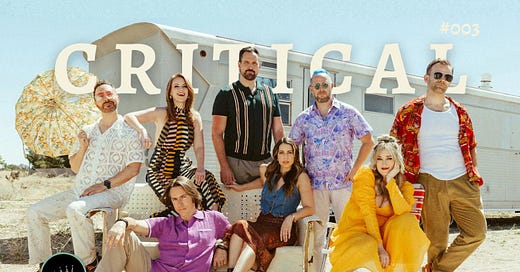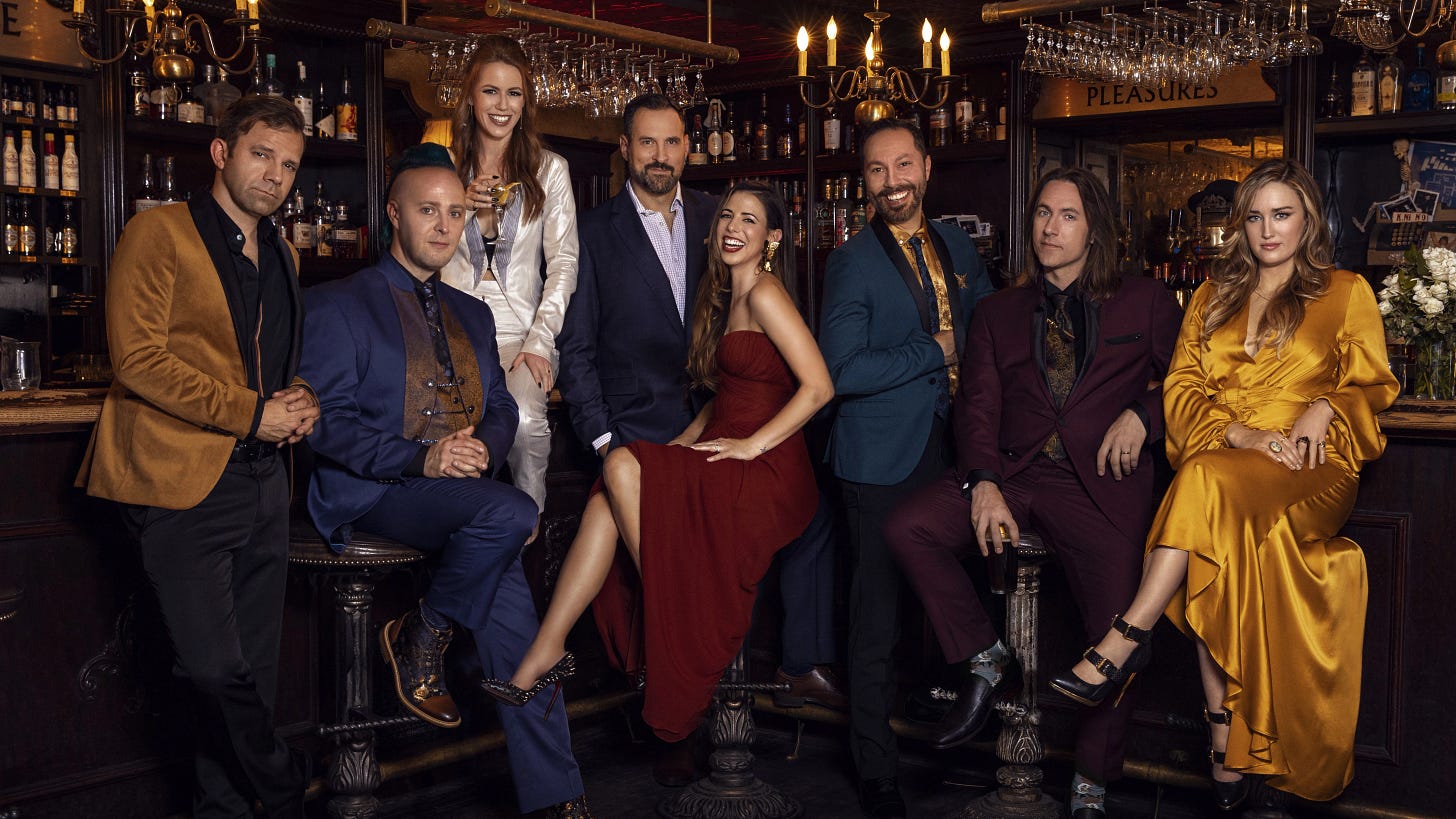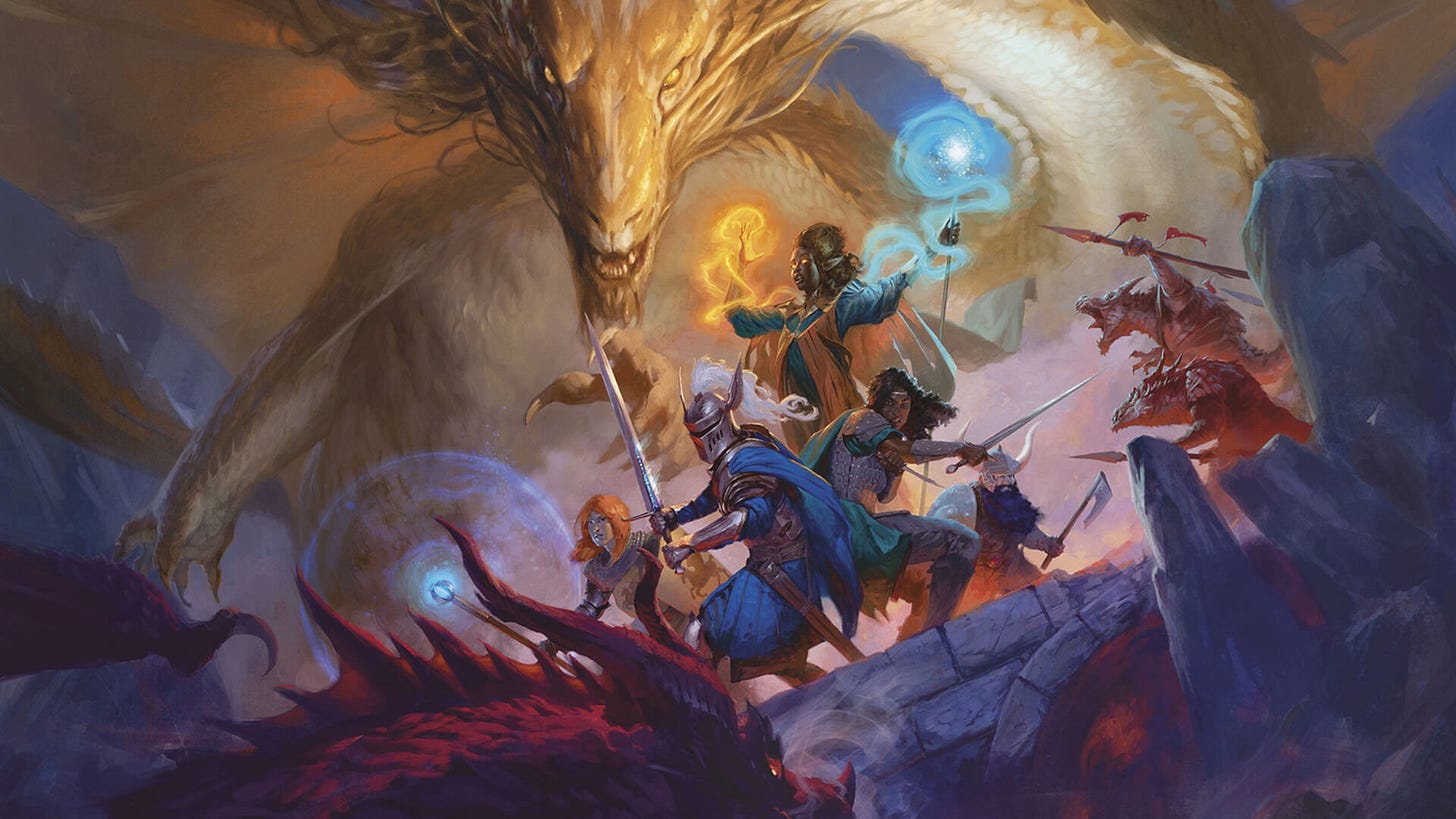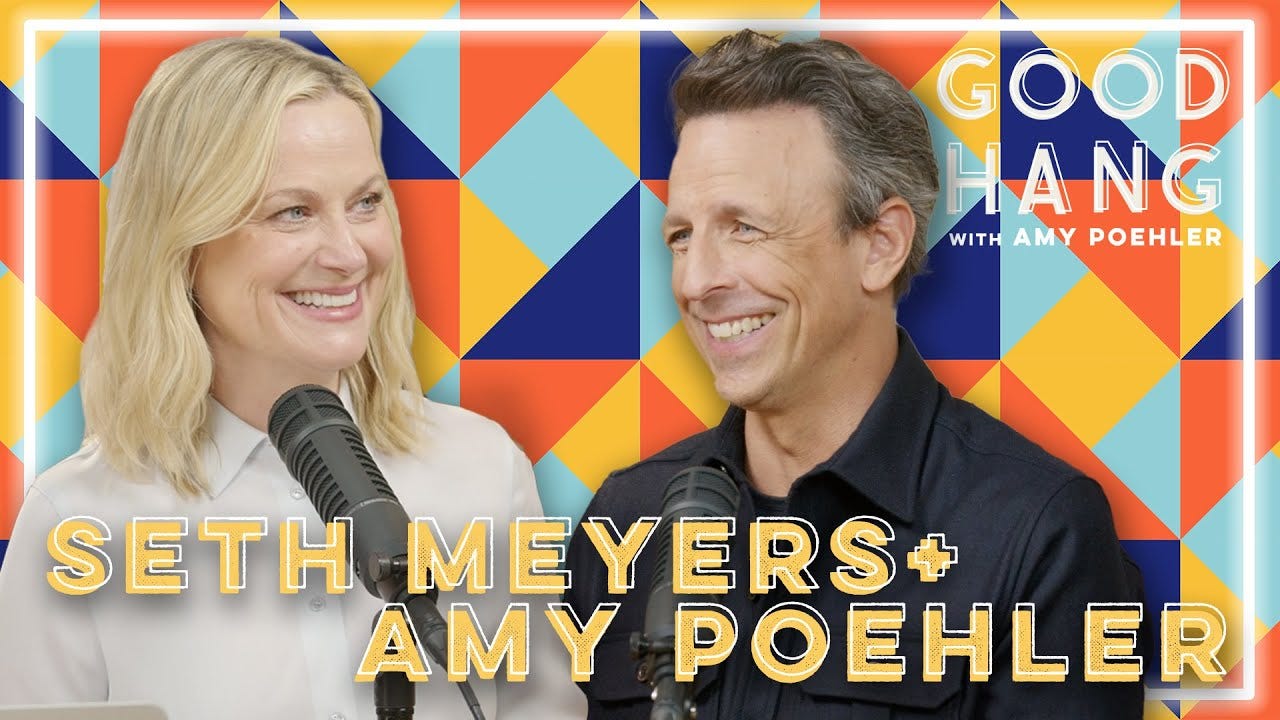This game makes you a better storyteller
Ten storytelling lessons from a 50-year-old game that launched a creative empire
Issue #003: Breaking down storytelling from page, screen, and feed so you can tell better stories.
For over a decade, a group of friends has gathered around a table to roll dice and tell stories, creating a world of unforgettable characters and epic adventure.
I’m of course talking about my friends and I playing Dungeons & Dragons (or you and your party, for my D&D-loving subscribers).
But today, let’s take a moment to celebrate the group that made D&D internet-famous: Critical Role, now celebrating their tenth anniversary of turning dice rolls into drama — and building a creative empire in the process.
So in this issue let’s cover:
Ten lessons from Dungeons & Dragons that will make you a better storyteller
How eight friends turned playing a game into a billion-view creative empire
How to successfully throw a pre-book launch event
I first discovered Dungeons & Dragons as a kid, when a friend and I stumbled across the books at their cottage. We were mesmerized. It felt like we’d uncovered ancient tomes that could transport us to worlds full of magic and adventure.
And… that’s exactly what they are.
D&D is one of the best tools for sharpening your storytelling skills — helping you build immersive worlds and craft complex characters.
But before we dive into how it teaches us to tell better stories, let’s look at how eight friends went from playing around a kitchen table to creating a multi-million-dollar media empire.
What in the nine hells is Critical Role?
It’s 2015.
Obama is president. Your Instagram feed is still chronological.
And a group of self-described “nerdy-ass voice actors” livestream their home D&D game for the first time on Twitch and YouTube.
Fast forward ten years, and Critical Role is a full-blown media powerhouse.

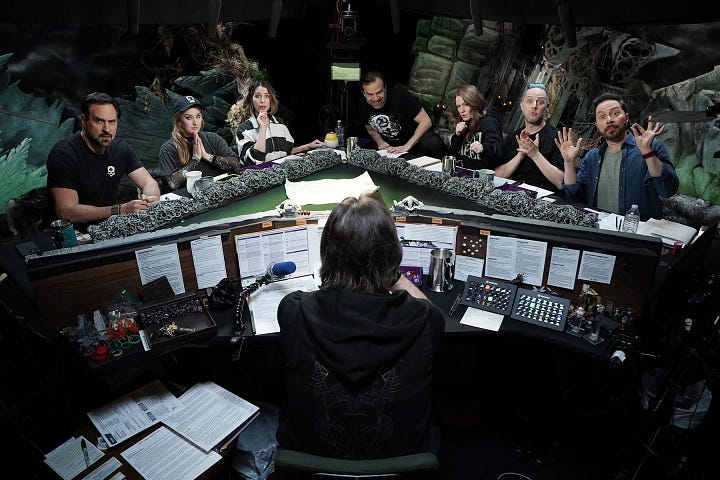
They’ve launched multiple streaming shows, published comics and novels, produced the hit animated series The Legend of Vox Machina on Amazon Prime, and cultivated one of the most passionate fandoms on the interwebz.
A few quick stats:
YouTube: Nearly 2.5 million subscribers and over 1 billion views
Twitch: 1.41 million followers, averaging 14,000 viewers per stream, and over 50 million watch-hours
Kickstarter: In 2019, their campaign for an animated show based on their game became the largest Film/TV Kickstarter in history, raising $11.3 million from more than 88,000 backers
Amazon Prime: The show was picked up by Amazon Prime, premiered in early 2022, finished the year as the most in-demand animated series, and has been renewed through Season 4, with a second series on the way
Daggerheart: Their new tabletop roleplaying game (TTRPG) sold out immediately in official Critical Role shops
And just this week, Critical Role announced the hiring of Chris Perkins and Jeremy Crawford — the creative leads responsible for guiding D&D to its most successful era.
But beneath the games, shows, books, merch and million-view episodes, Critical Role is still a close knit group of friends telling stories together.
And that’s where the magic lives. But none of this is happening without the game that started it all…
Dungeons & Dragons.
Wait D&D? You mean the satanic panic game?
Yes, we’re talking Dungeons & Dragons, the game that once sparked satanic panic in the ‘80s.
And today it’s never been more popular.
Launched in 1974, the game surged in popularity in the late ‘70s, selling 1.5 million copies of Advanced D&D in 1977 alone
In 2020, the game saw a 33 % revenue spike during the pandemic as players turned to collaborative storytelling over Zoom and Roll20
Today, over 85 million people worldwide have played D&D
Baldur’s Gate 3, based on D&D lore, sold over 15 million copies, swept major gaming awards, and generated over $260 million in revenue
So, what can storytellers learn from a game like D&D and ten years of Critical Role?
10 storytelling lessons from Dungeons & Dragons
1. Let characters make interesting choices, not smart ones
As a young writer, my characters often felt flat and unrealistic. I realized it was because I was always having them make the right choice to move the plot forward. But the right choice is often so boooorrrrring.
The same can happen in D&D if you always play it safe with your character. Don’t.
Embrace character flaws and unexpected decisions. These moments often lead to the most memorable and dynamic storytelling.
2. Consequences are the backbone of believability
If nothing matters… nothing matters. Let actions have weight. Let bad calls your character makes reverberate throughout the story.
The best games of D&D are filled with consequences. Want to rob the tavern owner? Go for it. But there’s no take-backsies when you find out the pub is a front for the city’s devil-worshipping crime syndicate.
3. Let the world be a character
The world of a good story isn’t a static backdrop. It’s alive. It reacts. It challenges your characters and immerses your audience in the story with evocative, sense-driven details.
I’ve always felt like a well-crafted setting isn’t just the occasional descriptive prose — it’s an active participant in the story.
So let the environment, cultures, and history help shape the characters’ journey.
4. Failing is more fun than succeeding
When you play D&D, you often roll a 20-sided die (D20) to attempt something, like leaping from a rooftop or picking a lock.
A 1 on the dice usually means instant fail. A 20? Tremendous success.
But here’s the thing… The Nat 1s are often way more interesting (and fun) than the Natural 20s.
The same is true in our stories. Failure builds tension, sparks growth, and creates unexpected opportunities for character development.
So embrace failure (and Nat 1s).
5. Silence and stillness are more tense than loud action
Some of the most powerful moments in D&D (or any story) come from the pauses. Quiet glances. The heartbeats between decisions. The stillness before the storm.
These moments give space for emotions to land and tension to build.
So leave room for silence to add weight to your scenes.
6. Longform storytelling rewards patience
In D&D, long-running games can unfold over months or years, allowing for deep character arcs and meaningful payoffs.
In my game with friends, our most trusted ally, a Gandalf-esque wizard mentor, revealed himself as a villain — three years into our game.
It was an epic betrayal (I’ll never forgive you Raymond).
Slow builds make the payoff of climactic moments even more satisfying. So plant seeds for twists and reveals in your stories to delight (or horrify) your audience.
7. Character backstory is a story engine
We loveeee good backstory, but don’t lore/info dump these juicy details. Trickle backstory, let us wonder and learn as we discover more about the character through their actions.
Letting a backstory emerge organically and be fully unveiled at the perfect moment adds delicious emotional weight to your narrative.
8. Make space for player/audience buy-in
Collaborative storytelling thrives on participation. In D&D, everyone at the table is building the world together—reacting, improvising, shaping the story in real time.
But if you’re writing a novel, you can still invite that kind of shared engagement. Give your audience room to speculate, theorize, and obsess.
Consider that R+L=J, a major Game of Thrones twist, was first suggested in an internet forum back in 2006 — over ten years before the fan theory was confirmed on the show.
Let your audience feel like co-conspirators. Leave space for investment, and delight them with surprises.
9. Tell the story you want to read (or play)
The best stories don’t come from meticulously following trends, chasing algorithms, or ticking boxes off checklists.
They’re shaped by what you crave to create. The characters you wish existed, the moments you can’t stop imagining. Chances are if it excites you, it’ll resonate with someone else too.
So lean into creating what is uniquely yours. The weird, the heartfelt, the epic, the messy. The stories only you can tell.
10. The best stories are built on love and commitment
Love your characters. Love the people you’re creating with. Love the story you’re telling — even when it’s messy or hard.
If we can learn anything from ten years of Critical Role, it’s showing up with heart and consistency matters. They streamed weekly. Built worlds together. Took big risks. Made space for each other.
And in doing so, made space for millions of fans as well. So perhaps the final insight is… stories don’t need to be perfect. But they do need love.
The Takeaway
Dungeons & Dragons isn’t just a game —it’s a masterclass in storytelling.
And Critical Role’s decade-long run has shown us what’s possible when people come together to create with courage, curiosity and consistency.
From cultivating community, to committing to longform creativity, to loving flawed characters chasing connection —this game is full of lessons for any story lover.
So my dear adventurer, be brave.
Whether you’re fighting dragons, living in our unpredictable world, or daring to create. Take a deep breath. Show up. Bet on yourself and the story only you can tell.
To put it simply…
Roll the dice.
Stories this week
Here are the stories I’ve been loving over the last week. Reply back to this email with any stories you’re digging lately. Always appreciate a recommendation 👀
📺 Watching: Bad Sisters
I’m way late to the craic here, but my wife and I are halfway through Season 1 of the Irish dark comedy Bad Sisters, and we’re loving it.
Streaming on Apple TV, the show unfolds in a series of flashbacks as we learn more about the Garvey sisters, the secrets they’re hiding, and the lengths they’d go to protect one another.
The standout for me is Sharon Horgan, who developed the series, wrote the teleplay, and stars as the oldest sister. With kinetic chemistry between the cast, wicked humour, and a mystery unfolding throughout the show — it’s well worth a watch.
Takeaway: The show’s non-linear storytelling is worth a deep dive in a future Storied issue. When done right (and the Peabody award for Season 1 suggests they stuck the landing) it’s a smash. When done poorly, it feels like trying to piece together a terribly designed puzzle. We’ll explore how to get it right in a future issue 👑
📚 Reading: More thoughts on book promotion
I was lucky to have
’s piece on book promotion show up in my Substack feed and I loved how detailed and transparent she was.Anne-Sophie details how she threw a pre-book launch event for her new mystery thriller novel, The French Honeymoon, and the newsletter is packed with great advice on building word-of-mouth interest.
“We can waste so much time chasing media hits (like, say, pitching essays to outlets) when they are so many little opportunities up for grabs everywhere.” — Anne-Sophie Jouhanneau
Check out her newsletter, Creative Encounters, for more insights and advice on novel writing and publishing — it’s full of gems.
Takeaway: Reading the post had me daydreaming about throwing a launch party for my debut novel. I just have to… you know… finish it.
🎧 Listening: Seth Meyers on Good Hang with Amy Poehler
Amy Poehler’s new podcast, Good Hang, is a pure delight.
From Paul Rudd to Tina Fey to Michelle Obama, Amy brings on A-list guests/friends and charms them all with her signature wit, warmth, and disarming ease.
Her chat with Seth Meyers, her longtime friend and Weekend Update co-anchor, was equal parts hilarious and vulnerable.
Looking for your next easy listen that’ll make you snort with laughter in the grocery store? It’s Good Hang.
Takeaway: Tinyyyyy spoiler for the episode… Seth tears up when Amy shares how she and an SNL exec instantly saw his potential. He shares how difficult those early days of SNL were, as he grappled with impostor syndrome.
“I know to this day, I don’t make it on that show without you guys.” — Seth Meyers
A beautiful reminder: we don’t always see our own potential — but having someone else believe in yours can change everything. Be like Amy. Lift others up.
Lastly… Amy Poehler, we love you and we like you.
Wish I wrote this
“Pain doesn’t make people, it’s love that makes people. The pain is inconsequential. It’s love that saves them… And I wish for you, in the future, to find someone who will mourn you when you are gone.” — Taliesin Jaffe, Critical Role C2 EP110
Thanks for reading
. I’d love to hear what you think — say hey on LinkedIn or find me on alllll the socials as @ScottySharesIf you liked this issue, please share it with a friend. See you in the next one!


